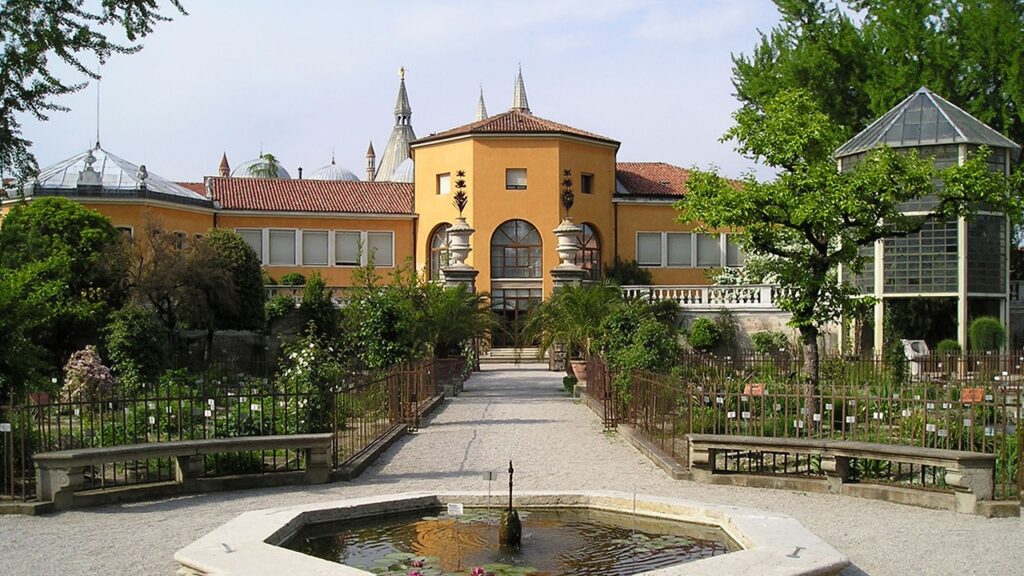
Created in 1545 on the property of the Benedictine monks of St. Justina, Padua Botanical Garden is the oldest existing university botanical garden in the world.
The Senate of the Venetian Republic approved its foundation for the cultivation of medicinal plants, which later constituted the largest portion of the so-called “simple” herbs, i.e. medicaments of natural origin. This is why early botanical gardens were called Horti simplicium (“Gardens of Simples”). Planted in 1585, the Mediterranean palm, Chamaerops humilis, at Padua’s botanical garden is the oldest plant in the garden. Known as “Goethe’s palm” because the German writer studied it while staying in Padua before writing his essay “The Metamorphosis of Plants.” This tree is situated in a greenhouse inside the Ortus Sphearicus, where there is also a ginkgo and a magnolia dating back to the mid-18th century, which are regarded as the oldest specimens in Europe. A gigantic plane tree in the outside Arboretum dates from 1680; it has a hollow trunk, owing to a lightning strike.
